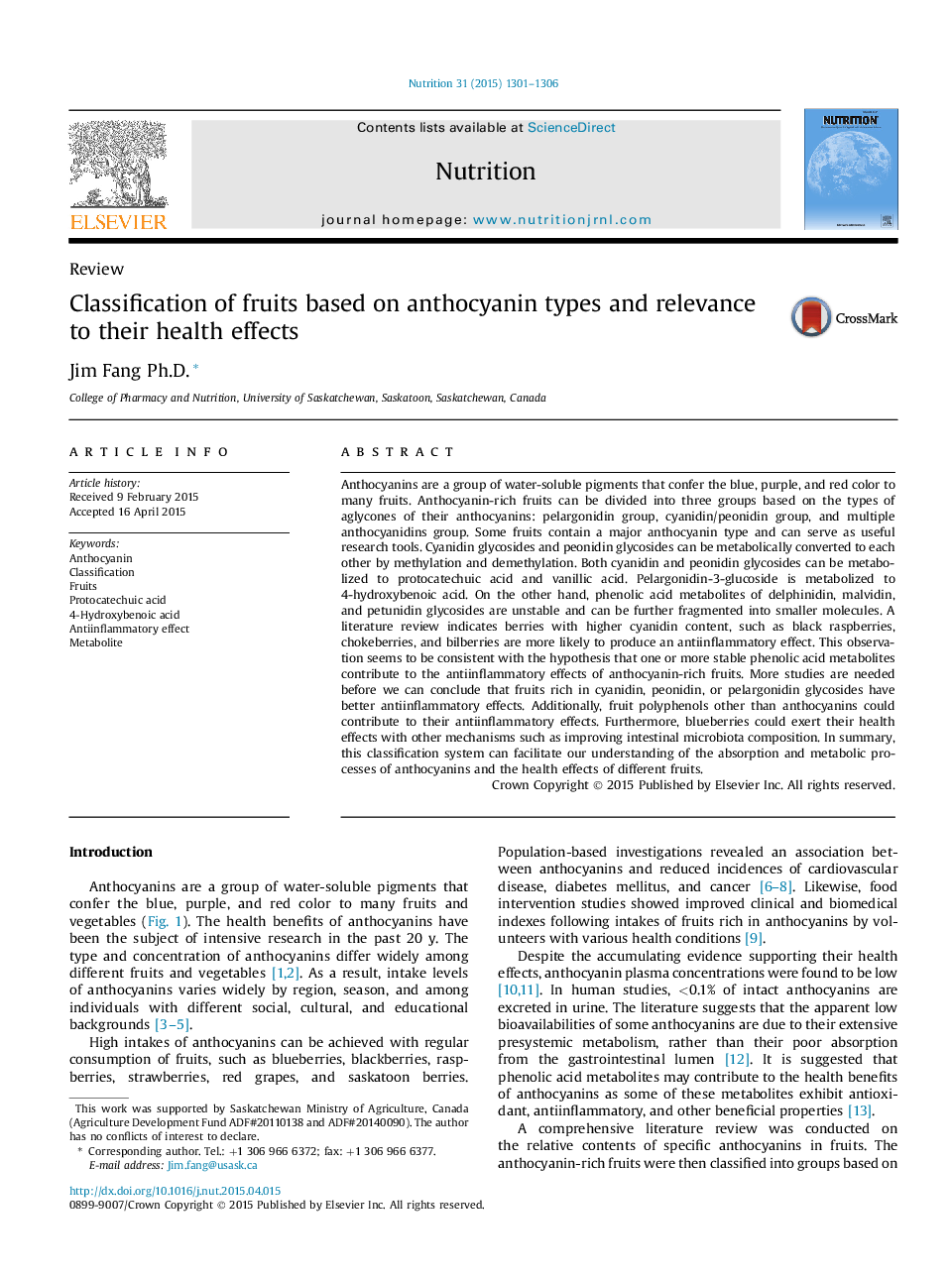| کد مقاله | کد نشریه | سال انتشار | مقاله انگلیسی | نسخه تمام متن |
|---|---|---|---|---|
| 3276263 | 1589667 | 2015 | 6 صفحه PDF | دانلود رایگان |
• Fruits are divided into pelargonidin, cyanidin/peonidin, and multiple anthocyanins groups.
• Cyanidin and peonidin glycosides can be metabolically converted to each other.
• Cyanidin, peonidin, and pelargonidin glycosides can be metabolized to stable metabolites.
• Higher cyanidin and pelargonidin content may be associated with antiinflammatory effect.
• Antiinflammatory effect may be attributed to the stable phenolic acid metabolites.
Anthocyanins are a group of water-soluble pigments that confer the blue, purple, and red color to many fruits. Anthocyanin-rich fruits can be divided into three groups based on the types of aglycones of their anthocyanins: pelargonidin group, cyanidin/peonidin group, and multiple anthocyanidins group. Some fruits contain a major anthocyanin type and can serve as useful research tools. Cyanidin glycosides and peonidin glycosides can be metabolically converted to each other by methylation and demethylation. Both cyanidin and peonidin glycosides can be metabolized to protocatechuic acid and vanillic acid. Pelargonidin-3-glucoside is metabolized to 4-hydroxybenoic acid. On the other hand, phenolic acid metabolites of delphinidin, malvidin, and petunidin glycosides are unstable and can be further fragmented into smaller molecules. A literature review indicates berries with higher cyanidin content, such as black raspberries, chokeberries, and bilberries are more likely to produce an antiinflammatory effect. This observation seems to be consistent with the hypothesis that one or more stable phenolic acid metabolites contribute to the antiinflammatory effects of anthocyanin-rich fruits. More studies are needed before we can conclude that fruits rich in cyanidin, peonidin, or pelargonidin glycosides have better antiinflammatory effects. Additionally, fruit polyphenols other than anthocyanins could contribute to their antiinflammatory effects. Furthermore, blueberries could exert their health effects with other mechanisms such as improving intestinal microbiota composition. In summary, this classification system can facilitate our understanding of the absorption and metabolic processes of anthocyanins and the health effects of different fruits.
Journal: Nutrition - Volume 31, Issues 11–12, November–December 2015, Pages 1301–1306
